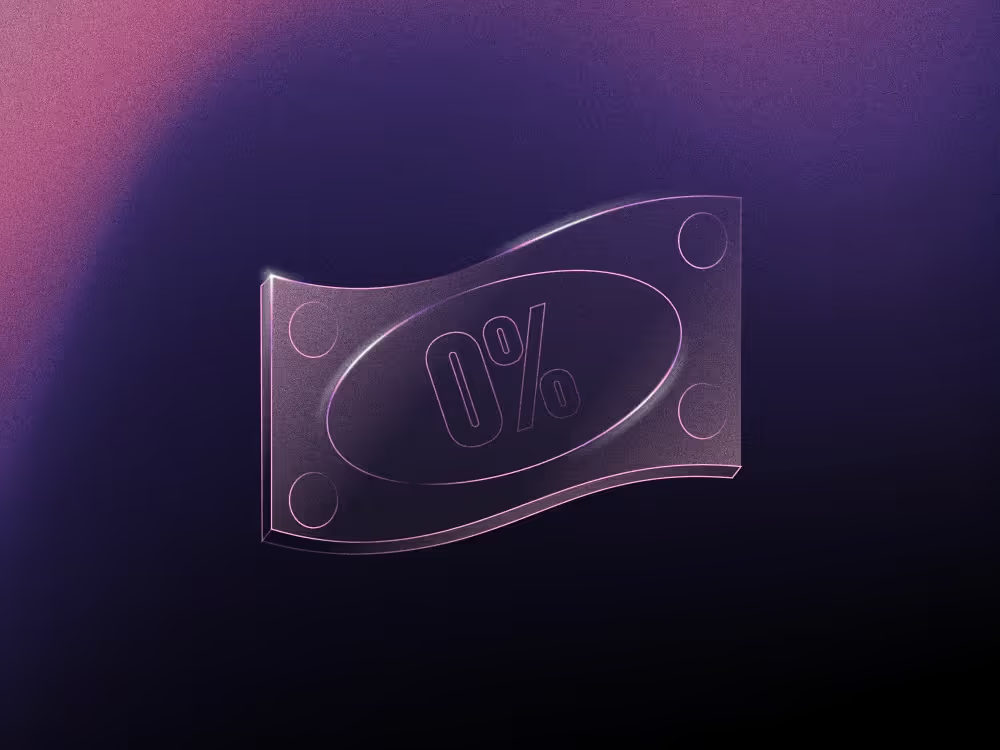The different types of mutual funds can be confusing to get your head around, but our quick guide should help you learn everything you need to get started.
Read on to find out about the various types of mutual funds and why they could make a sound addition to your portfolio.
What is a mutual fund?
A mutual fund is a vehicle that allows many investors to combine their money in order to assemble a varied portfolio of assets. The funds and their portfolios are managed by professionals, giving investors a quick and easy route to diversification and expertise.
The price of mutual funds is determined by their Net Asset Value (NAV) per share, which is the combined value of the securities held by the fund divided by the number of shares available. Their price does not fluctuate throughout the day, and is instead updated at the end of each trading day.
Unlike ETFs, mutual funds are NOT traded via exchanges, meaning that investors transact directly with the fund rather than through a secondary market.
What are OEICs and unit trusts?
In the UK, the term ‘mutual fund’ is used to refer to two common types of fund: Open-Ended Investment Companies (OEICs) and unit trusts. These two variants are almost identical from an investor perspective.
However, as their names suggest, OEICs are legally structured as companies, and unit trusts are trusts. This means underlying assets within an OEIC are legally owned by its investors, while assets held by a unit trust are owned by the trust.
The other major difference is how pricing works for those buying into a mutual fund or those selling their holdings. OEICs generally have one consistent price for those buying and selling units, while unit trusts have an offer price that buyers must pay and a bid price that sellers receive. This is because costs are removed from the bid price in the event of a transaction, making bid prices lower than offer prices.
When you invest in mutual funds domiciled outside of the UK, you may encounter some different mutual fund structures.
If you want to know more about the definition of mutual funds, read our full guide to mutual funds.
What are the different types of mutual funds?
There is no escaping that mutual funds’ names can appear wildly confusing. They are often called things like Emerging Markets Sustainable Large Cap Equity Fund (Acc).
But what does that actually mean?
Well, this exploration of the various types of mutual funds will shed some light on how to understand the difference between funds and easily interpret the type of assets a fund will seek to invest in.
Equity funds
Equity funds focus on investing in stocks. They might focus on a particular type or category of stocks, such as value stocks, dividend stocks or growth stocks.
In addition, they might be passive or actively managed funds. Passive funds are usually set to track a particular index, like the FTSE100, and therefore attempt to offer investors a way to follow the ups and downs of that index.
Conversely, actively managed funds are curated by fund managers, who choose investments based on the fund’s parameters with the aim of meeting objectives and beating certain benchmarks. A talented fund manager might be able to beat the market or mitigate the impact of market downturns, but these types of funds also usually charge higher fees than their passive counterparts.
Bond (fixed-income) funds
As the name suggests, bond funds focus on investing in debt securities. They generate a fixed income and tend to be less volatile than equities. Two key terms that differentiate different bond funds are:
- Government bonds: Bonds issued by governments tend to be lower risk. While low risk, they may also offer lower potential returns than corporate bonds. It is also worth noting that UK government bonds are known as gilts.
- Corporate bonds: Corporate bonds are issued by companies as a means of raising capital. They may be classified as ‘investment grade’ or ‘high-yield’, with the former generally offering a lower level of risk but lower returns.
It is worth noting that some bond funds are also index funds, tracking the performance of a particular index rather than being actively managed.
Hybrid & asset-allocation funds
Some funds might invest in a mixture of different asset classes, such as equities, bonds, cash and even commodities. These funds might have a fixed allocation of different asset classes, such as 60% equities and 40% bonds, or might have the flexibility to evolve over time.
Sector & thematic funds
While most funds have some kind of general theme or objective, some funds carry a very strong and clear theme. Some examples include:
- Geography: Some funds are focused on a different region or country. They might focus on the UK, US or Japan, or else Europe, North America or Asia.
- Sector: Funds might be themed around energy, technology, healthcare, biotech or other industries.
- Market cap: Funds might exclusively invest in stocks of companies with a large or small market capitalisation.
You might encounter other, more diverse themes when exploring funds. You can read into a specific fund’s objectives to learn more about how it will be structured and what assets it might focus on.
ESG & sustainable funds
These funds are focused on investments which are beneficial from an environmental, social and governance (ESG) perspective.
A fund’s managers will often list the specific criteria and considerations made when selecting the investments held by the fund.
It is worth noting that the Financial Conduct Authority has clear labels for investment funds that fall into certain sustainability categories. While these labels are designed to combat ‘greenwashing’ - where funds might attempt to sound more environmentally friendly than they actually are - they are not a catchall, and some overseas ‘sustainable’ funds may not fall under the regime due to following different non-UK rules. Always do your own research.
Accumulation funds vs income funds
Another key difference you might see in different mutual funds is that they all include the word ‘accumulation’ or ‘income’ in their names, or else the abbreviations ‘Acc’ and ‘Inc’. On the surface, the difference between these two types of funds is simple, but crucial to consider when investing:
- Accumulation: Any gains made by your initial investment in the fund are reinvested into it. These are also sometimes called ‘growth’ funds.
- Income: Gains made by your initial investment are paid out to you as cash. These funds are sometimes also referred to as ‘dividend’ funds.
Because of the difference in how investor returns are treated, these funds can also be managed differently.
Accumulation funds are more likely to seek out investments they expect to increase in value over the medium to long term. For example, they might be weighted towards tech stocks. These types of funds might suit investors looking to put their money away for an extended period of time, such as those saving for retirement in a Self-Invested Personal Pension (SIPP).
Income funds aim to provide investors with regular cash payouts, and so often instead focus on dividend stocks, or fixed-income instruments like government or corporate bonds. Funds like these are likely to appeal to investors who want to supplement their income, such as retirees or those who need passive income.
Which type of mutual fund should you choose?
Choosing a mutual fund will depend on your personal circumstances and needs. Make sure to read the Key Investor Document (KID) associated with the fund to make sure it is right for you. Here are some factors to consider when choosing your next mutual fund:
- Objectives: Does the fund’s stated objective align with your investment goals? If you want to receive income now, it might be best to avoid an accumulation fund targeting growth over the medium to long term.
- Performance: Past performance is no guarantee of future returns, but examining how a fund has fared might help you to make up your mind about whether to invest.
- Risk: Does the fund align with your risk tolerance? For example, if you want to invest for a relatively short period and want your money to be relatively safe, backing a fund heavily weighted towards tech stocks might not be for you.
- Fees: All mutual funds charge some kind of fee, but some are more expensive than others. They might include fees when you buy or sell your shares in the fund, or ongoing management fees. Actively managed funds tend to be more expensive than passive funds. Always make sure you understand what you are going to be paying before you transact.
- Diversification: If a fund overlaps too much with your existing investments, it might leave you poorly insulated against market volatility.
Types of mutual funds - FAQs
Is an ETF a type of mutual fund?
Exchange-traded funds (ETFs) are not a type of mutual fund, nor are they the same as mutual funds. Some key ways in which ETFs are different include:
- They are traded via exchanges.
- They can be purchased when the market is open and prices fluctuate throughout the day.
- ETFs tend to have lower fees, as they are less likely to be actively managed and perform fewer trades.
Which mutual fund is best?
The ‘best’ mutual fund for you will depend on your personal investment goals and your financial circumstances. It is impossible to predict future performance with certainty, but you can examine a fund’s objectives, investment strategy, past performance and fees to determine if it lines up with your goals, risk appetite and diversification needs.
What are mutual funds called in the UK?
In the UK, the term ‘mutual fund’ usually refers to Open-Ended Investment Companies (OEICs) and unit trusts.
Freetrade does not give investment advice and you are responsible for making your own investment decisions. If you are unsure about what is right for you, you should seek independent advice.SIPP rules apply. Tax treatment depends on your personal circumstances, and current rules may change.
A SIPP is a pension designed for people who want to make their own investment decisions. You can normally only access your money from age 55 (57 from 2028).

.avif)


.avif)

.avif)




